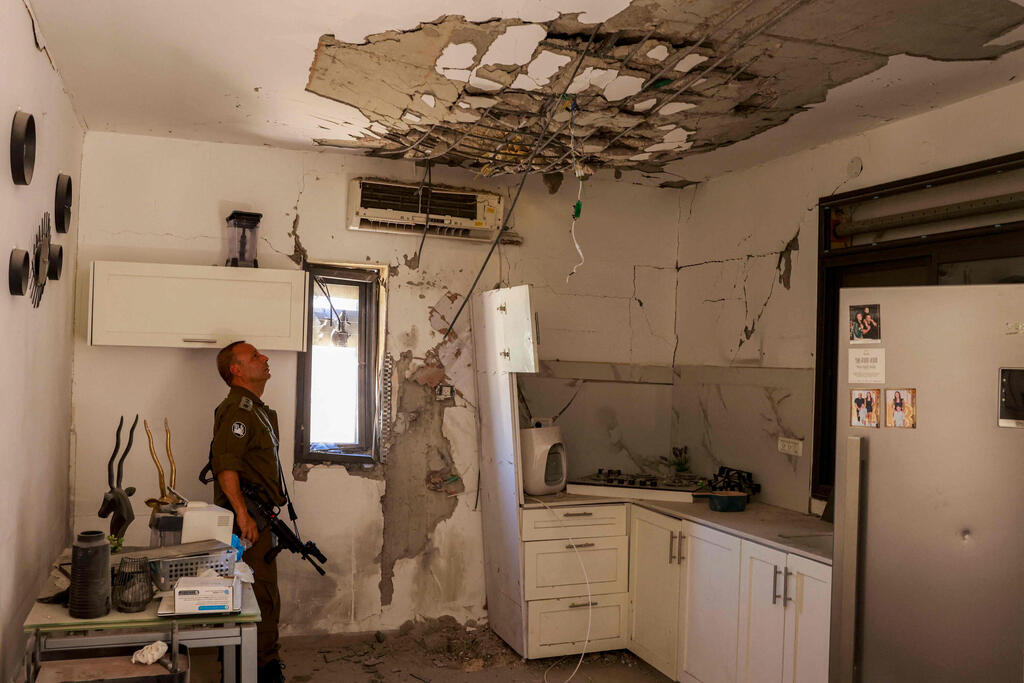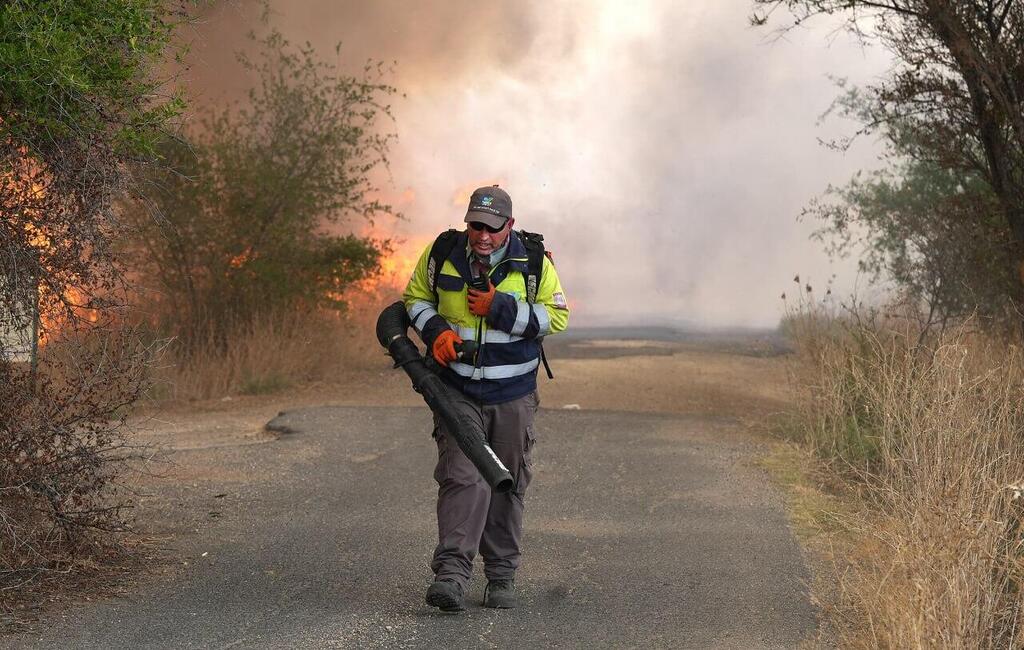Getting your Trinity Audio player ready...
44 killed, 271 injured, and tens of thousands displaced: A new report from the National Information Center in the Prime Minister's Office summarizes the enormous damage in northern Israel.
While the government hesitates to adopt a strategy against Hezbollah, findings unveil a grim situation: billions of dollars in damages to agriculture and tourism, tens of thousands of acres burned, and no end in sight.
UAV being intercepted in Upper Galilee
Since October 8, the day Hezbollah joined as a "support front" for Hamas, over 7,500 rockets have been launched by the Iranian proxy, with around 6,500 crossing into Israel. Additionally, more than 200 UAVs have entered Israeli territory. July saw the highest number of rocket and UAV launches, with 1,091 launches, followed by May with 1,000, and June with 855. In contrast, January recorded 344 launches toward Israel, indicating a trend of escalation on the Lebanon border.
Also since October 8, 24 Israeli civilians and one Indian civilian have been killed in the north. Nineteen security personnel have died in the fighting in the north, bringing the total number of fatalities in the north since the fighting began to 44. Moreover, 271 people have been injured, including 130 civilians and 141 security personnel.
The report also notes the number of evacuees from northern communities. As of August 11, 62,480 people have been evacuated, including 16,855 staying in hotels, 45,562 residing in various communities and 63 "self-evacuated." Approximately a quarter of the northern evacuees are under 18, totaling 15,715. The largest group among the young evacuees are children ages 7-12.
According to Tax Authority data, since the outbreak of fighting in the north 4,378 damage claims have been submitted for buildings and property in northern settlements. These include 2,581 claims for building damages, 910 for vehicle damages, and 183 for agricultural damages. The Tax Authority estimates that this is far from over, as thousands of additional claims are expected from evacuees who have not yet seen the damage to their homes.
Firefighters have responded to 790 fire incidents caused by rocket falls since October. According to data from the Nature and Parks Authority, around 39,000 acres have burned across the north. Most of the damage occurred in the Golan Heights (22,360 acres) and Upper Galilee (12,330 acres).
The fires also consumed over 2,470 acres of grazing land, and about 25 acres of wheat and irrigation systems. In total, 30 grazing areas have been damaged since the fighting began, 24 of which are closed for security reasons.
Economic impact on agriculture and tourism
According to the report, since the war began, tourism has suffered a direct income loss of approximately $309 million. Additionally, tourism support sectors have lost another $710 million in income. The Tax Authority has so far paid $403 million in compensation to northern tourism businesses.
In agriculture, the total cost of food loss to the national economy in the first six months of the war is estimated at around $269 million. This includes $180 million in food loss due to the destruction of 330 million lbs. of agricultural produce, $36 million in environmental costs due to food loss, and $56 million in additional health costs due to the consumption of less healthy food, impacting residents' health, according to the report.
Indirect damages to northern farmers are estimated at nearly $269 million. The Upper Galilee and Ma'ale Yosef regions account for about a third of Israel's agricultural land. These areas grow olive trees on about 32,100 acres, producing about half of Israel's olive oil. Around 40% of Israel's deciduous and subtropical fruit crops are in the Upper Galilee, including approximately 11,610 acres of avocados, 6,420 acres of grapes (mostly wine grapes), 1,830 acres of plums, 2,720 acres of mangoes, 3,830 acres of peaches and nectarines, 1,980 acres of bananas and 1,930 acres of citrus fruits.
Incessant fire exchanges notwithstanding, about 30% of the fruit-growing areas within 1.2 miles from the border are still active. Within 2.5 miles, about 45% of the areas are active. The most significant damage is to apple and kiwi orchards. In the affected northern settlements, there are about 4,940 acres of orchards, with more than 2,470 acres burned out of 3,460 acres of crops in those plots.
In the egg industry, about 70% of Israel's laying hens are concentrated in the Galilee and Golan, producing about 1.6 billion eggs annually, about 73% of the national production. 21 poultry houses were damaged in the councils of Merom Golan, Mevo'ot Hermon, and Ma'ale Yosef. Other poultry houses reported a decrease in egg production due to smoke damage.








